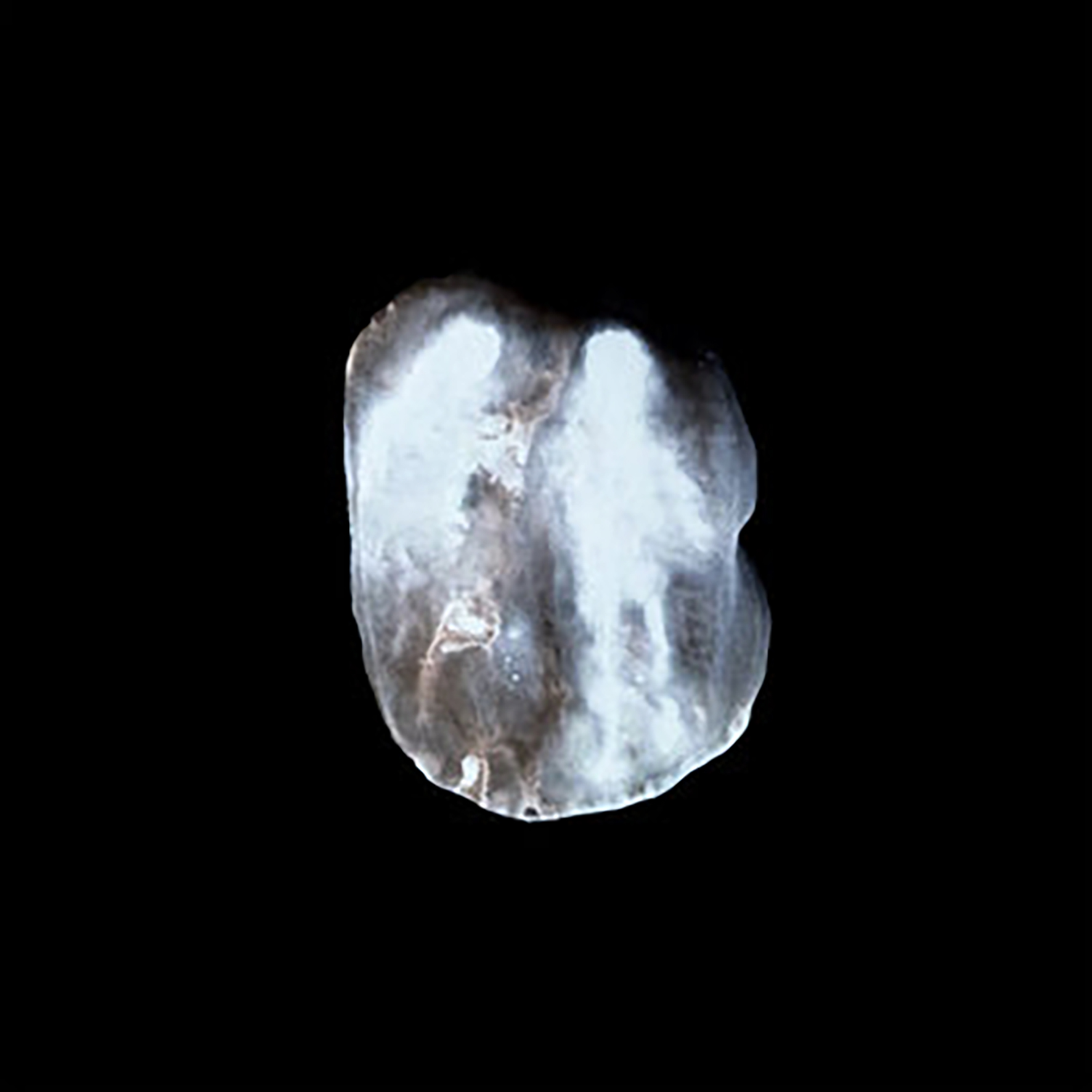 This second album from Milan-based visual artist/electro-acoustic composer Domiziano Maselli can be a disorienting collision of disparate inspirations at times, but it is certainly an intensely visceral and compelling experience when it hits the mark. Opal's description of the album mentions that Maselli possesses an "uncanny skill to create non-conformist drama," which feels like an apt characterization. It is similarly fair to say that Maselli likely has an extreme fondness for the gloomy prime of artists like Haxan Cloak and Raime, as well as a deep appreciation for Emptyset's seismic and intense approach to sound design. Elements of all three are certainly present on Lazzaro, though Maselli proves quite adept at building upon their best bits. That said, there are also a few pieces that radically break from the influences Maselli wears on his sleeve and they are uniformly brilliant. In one case, he approximates a massive contraption of slowly whirling jagged, rusted metal blades, while elsewhere he unleashes something akin to a demonically possessed string quartet hellbent on conjuring the darkest psychedelia. For me, Lazarro is a very strong album for those two pieces alone, but his execution for everything else is quite impressive as well.
This second album from Milan-based visual artist/electro-acoustic composer Domiziano Maselli can be a disorienting collision of disparate inspirations at times, but it is certainly an intensely visceral and compelling experience when it hits the mark. Opal's description of the album mentions that Maselli possesses an "uncanny skill to create non-conformist drama," which feels like an apt characterization. It is similarly fair to say that Maselli likely has an extreme fondness for the gloomy prime of artists like Haxan Cloak and Raime, as well as a deep appreciation for Emptyset's seismic and intense approach to sound design. Elements of all three are certainly present on Lazzaro, though Maselli proves quite adept at building upon their best bits. That said, there are also a few pieces that radically break from the influences Maselli wears on his sleeve and they are uniformly brilliant. In one case, he approximates a massive contraption of slowly whirling jagged, rusted metal blades, while elsewhere he unleashes something akin to a demonically possessed string quartet hellbent on conjuring the darkest psychedelia. For me, Lazarro is a very strong album for those two pieces alone, but his execution for everything else is quite impressive as well.
The opening "The Burrow" is the first of Lazzaro's two monster highlights, as it resembles a more malevolent and corroded sister to Eli Keszler's stellar Cold Pin album. It feels more like I am inside a vast, churning and scraping metal installation than like am hearing an electro-acoustic composition performed by a human, which is a neat trick. That said, there is evidence of Maselli's hand in some of the peripheral mindfuckery, as the mechanized intensity is enhanced by waves of seismic sub-bass, something resembling a flock of nightmarish birds, and some stammering and ravaged chords. At one point, I almost felt like I was aboard the Nostromo being menaced by skittering sounds from inside the walls. The following "A Desolation Chant" heads in a very different direction, approximating a soulful, reverberating sax solo in an empty parking garage. However, it often feels seem like the noirish sax licks transform into something menacing and sentient as they echo around their subterranean concrete environment, as there is a dark undercurrent of murky, gnarled dissonance and bass throb. Next, a brief interlude of storm sounds cleanses the palette for the album's second masterwork: the heaving and explosive string onslaught of "Gethsemane." While it has a haunted-sounding melodic motif at its core, the real magic lies in the violently sawing attack of the bow, the squealing harmonics, and the lysergic descending smears that appear in the background around the halfway point. To my ears, the epic two-part closer "Lazzaro" does not quite hit the same heights, but it is not a misfire either, as the diptych calls to mind a folk ensemble blearily emerging from a cave in the smoldering aftermath of the eschaton. That seems like a damn fitting way to end such a wonderfully blackened and intense album.
Samples can be found here.